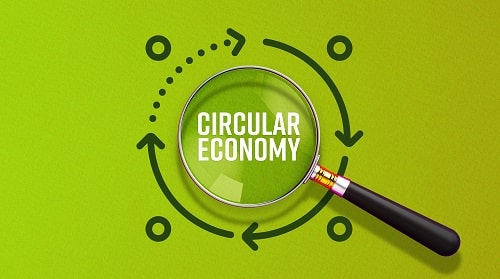By being open, honest and vulnerable in their interactions at work – and genuinely seeking and valuing the input of employees – leaders can develop a workplace atmosphere where trust and respect flourish, in turn supporting the wellbeing, engagement and performance of their teams.
Features
Pursuing workplace wellbeing through authentic leadership
In the dynamic and competitive landscape of the contemporary workplace, organisations are realising that success is no longer solely a financial measure but also dependent on employee satisfaction and engagement where a holistic approach to wellbeing and the role of leadership are paramount.
 Photograph: iStock/ShapeCharge
Photograph: iStock/ShapeCharge
Feeling valued and having purpose
Global events are influencing change within the workplace. The pandemic and current economic crisis are shaping the perceptions and expectations of people who are reassessing what they want from their working environment and employer. In the recent State of Work-Life Wellness report¹ (Gympass.com, 2024) 93 per cent of workers considered wellbeing at work to be as important as their salary, with 96 per cent of respondents stating that when looking for a job, they will only consider companies that promote their wellbeing. Increasingly, organisations are realising that to remain competitive and retain and attract talent they need to incorporate wellbeing into their strategies and planning.
However, it is important to acknowledge that workplace wellbeing is not exclusively linked to individual clinical and lifestyle factors. The characteristics of the work environment are impactful on individual physical and psychological health, both directly and indirectly through the experience of stress. Psychosocial hazards (also known as psychological health and safety; PHS) are defined by Cox and Griffiths² as, “…those aspects of work design and the organisation and management of work, and their social and environmental context, that have the potential for causing psychological, social or physical harm”. (1995, p.69).
When PHS hazards are not effectively managed, they can negatively impact on organisational measures, including safety, productivity, absenteeism and turnover. Hence, the development of ISO 45003³, which was created to guide employers on identifying and managing both the contextual and conceptual categories of PHS hazards. These include:
- How work is organised (for example, roles and expectations; job control; job demands; organisational change management; workload and work pace; remote and isolated work)
- Work environment, equipment and hazardous tasks (for example, poor workplace conditions; inadequate equipment; working in extreme conditions; working in unstable environments)
- Social factors at work (for example, organisational/workgroup culture; leadership; civility and respect; supervision; support).
Focusing on the social factors of PHS hazards, there are evident connections between leadership, organisational culture and perceived trust, respect and honesty. Yet, the impact of leaders as key influencers and gatekeepers to collective perceptions of safety and wellbeing is still not being fully recognised.
Leadership and workplace risk perceptions
People not only want to feel valued by their leaders, they also want to have trust in their commitment to preventing work-related injuries and ill health and for them to be authentic with their words and actions.
There is a body of evidence indicating that leading authentically and perceptions of risk are intricately linked, influencing how people within their work environment approach uncertainty, make decisions and navigate challenges. Authentic leaders are a mediating influence on individual stress and task performance (Nielsen et al., 2013)⁴. In an unpublished study examining the mediating factors of 14 lost time injuries, it was highlighted that shared workforce perceptions in the expectations and pressure from leadership to get tasks completed on time were contributing factors to the incidents. Another factor was when there was no clear communication or visible leadership to reinforce to the workers that what they were doing was correct, as they were not challenged (Fleming, 2020)⁵.
Leadership wellbeing
While there are literally hundreds of leadership styles, what people want from their CEO, line manager, supervisor or team leader is to be authentic; to be themselves. But this could be considered easier said than done.
There is often the perception that leaders are the fount of knowledge, the anchor that holds to weather the storm, and deal with pressure like water off a duck’s back. Whereas the reality may be that leaders are struggling with their own wellbeing but because there is still a stigma associated with leaders experiencing work-related stress, they are reluctant to reveal this.
 Photograph: iStock/PeopleImages
Photograph: iStock/PeopleImages
This was reinforced by a recent Deloitte Insight survey with C-suite leaders⁶ where 73 per cent of the C-suite reported that they were not able to take time off and disconnect. One in four executives stated that they do not disconnect because their workload would be unmanageable when they returned (25 per cent) and they were afraid they would miss out on important messages or emails (24 per cent). Other reasons given included too much work (24 per cent), the need to demonstrate they are dedicated to their job (22 per cent), and no one to cover for them while they are away (22 per cent).
Collating all the above indicates that finding an approach to lead people that considers the wellbeing of the workforce, the leader and the organisation seems to be the solution – perhaps authentic leadership could be the answer?
Authentic leadership
The concept of authentic leadership originates from positive leadership approaches such as charismatic and transformational leadership. Authentic leadership became prominent in the early 2000s and was then popularised by Bill George, former Medtronic CEO and professor at Harvard Business School in his seminal 2003 book Authentic Leadership⁷, where he suggests that to be a great leader starts with being yourself.
Reflecting on his 30 years of corporate executive experience, he concludes that, “…when leaders… lead in an authentic manner, they build enduring organisations that do great good for people and make an enormous difference in the world… their rewards will reach far beyond well-earned monetary rewards to the satisfaction of making a difference in the lives of customers, providing great opportunities for employees, and generating superior long-term return for shareholders. At the same time authentic leaders lead authentic lives and have time to share with their families” (pp. xvii-xviii).
Grounded in self-awareness, relational transparency, balanced processing and an internalised moral perspective (Walumbwa et al., 2008)⁸, authentic leadership not only fosters a culture of trust and collaboration but also plays a pivotal role in promoting workplace wellbeing, with links to job satisfaction, perceived work stress and stress symptoms. There is also substantial evidence pointing to authenticity benefiting the leader’s own wellbeing (Rahimnia & Sharifirad, 2015)⁹.
Self-awareness: the foundation of authenticity
To become an authentic leader begins with a lot of self-awareness and self-reflection. Having a deep understanding of your strengths, limitations, values and emotions. Not only do you need to work to understand yourself, but also others, using empathy and compassion. Leaders who are self-aware are better equipped to recognise their impact on others and make conscious decisions aligned with their values. This introspective quality enables leaders to lead with authenticity and integrity, laying the groundwork for trust and respect within the organisation.
An understanding of emotional intelligence (EI) is beneficial here as well, because the self and social awareness elements of EI are similar components to authentic leadership. Microsoft CEO Satya Nadella and Richard Branson, founder of Virgin Group, are famous leaders who use and value EI. EI helps to bring awareness to your emotions and those of others; develops the ability to manage your own emotions and those of others; and provides the ability to use emotions to make decisions and get things done. The comprehensive handbook by Bharwaney, Bar-On, and MacKinlay, EQ and the Bottom Line (2011)¹º, provides some ideas for applying EI in the workplace.
Relational transparency: building trust through openness
At the core of authentic leadership is relational transparency, the willingness to be open, honest and vulnerable in interpersonal interactions. Authentic leaders do not hide behind a facade of perfection; instead, they share their thoughts, feelings and experiences authentically, fostering genuine connections with their team members.
By demonstrating authenticity in their relationships, leaders create an environment where trust flourishes, enabling employees to feel safe to express themselves and contribute fully to the organisation.
 Dr Audrey Fleming is wellbeing health and safety consultant at British Safety Council. Photograph: British Safety Council
Dr Audrey Fleming is wellbeing health and safety consultant at British Safety Council. Photograph: British Safety Council
To build trust and share experiences authentically, storytelling has been shown to be a powerful and effective leadership skill. Two examples of great storytellers would be to watch Mark Bezos’ (co-founder of HighPost Capital) TED talk, and former President Barack Obama giving his ‘Fired up and ready to go’ speeches (observe how Obama tells the same story but adapts this to his audiences at University of Maryland in 2009 & Clinton’s campaign, New Hampshire, 2016).
Analysing their storytelling, both capture their audiences’ attention and imagination. They show vulnerability and ensure that their story is relatable to their audiences. Okay, so perhaps standing in front of your team/workforce to tell a story may seem quite daunting, exposing and will undoubtedly take some practice. But there are many online examples and resources available to help. Here’s an example of a structure to sell your story to strategically connect the personal and the professional, whether talking at a conference or discussing a task with your team:
- Story of Self – tell a short, personal story about a lesson you learned in life
- Story of Us – relate that lesson to something we’ve all experienced. In doing so, you are reinforcing the idea that ‘we’re all in this together’
- Story of Now – end your story with a clear call to action; a clear and tangible choice you want the audience to make.
Balanced processing: embracing diverse perspectives
Authentic leaders engage in balanced processing, a thoughtful and unbiased consideration of diverse viewpoints and perspectives. They actively seek out input from others, encourage opposing opinions, and make decisions based on a comprehensive understanding of the situation. By valuing diversity of thought and fostering an inclusive environment, authentic leaders cultivate innovation, creativity and collaboration, which are essential for both individual and organisational growth.
This is where trust and psychological safety within their teams develop, creating an environment where individuals feel comfortable taking risks and exploring innovative ideas. When people trust their leaders and feel psychologically safe, they are more likely to perceive risks as manageable and are willing to embrace new opportunities without fear of reprisal or judgment.
To build trust works both ways – as a leader you have trust in your people, but also you need to take deliberate action to gain their trust. As the Dutch proverb says, “Trust comes by foot and leaves on a horseback”. Feedback is also essential for building awareness – however, the way in which the information is delivered or received can impact trust and the relationship. Consider these three components when providing feedback:
- The information
- The emotion
- The intention
Internalised moral perspective: guided by ethical principles
Authentic leadership is underpinned by an internalised moral perspective, a strong set of values and integrity that guides decision-making and behaviour. Leaders with a well-developed moral compass uphold principles of fairness, justice and honesty, even in the face of challenges or temptations. By consistently demonstrating ethical leadership, they set a positive example for their team members. This ethical clarity influences risk perceptions, shaping how people evaluate the potential consequences and implications of their actions. All of this contributes towards a culture of integrity and trustworthiness within the organisation.
Some examples of ethical leaders¹¹ include Warren Buffett (co-founder and CEO of Berkshire Hathaway), Dame Anita Roddick (founder of The Body Shop), Eleanor Roosevelt (political figure, diplomat and activist) and Nelson Mandela (former President of South Africa). These are perhaps some role models to inspire your own ethical principles.
Some examples of demonstrating ethical leadership include considering:
- Wellbeing – what is ultimately good for the person
- Rights – entitlement to receive certain treatment
- Duties – a moral obligation to behave in a specific way.
- Best practices – aspirational standards not required by law or cultural norms
- Fairness – legitimate expectations of employees for reasonable practices and behaviours; procedural fairness when resolving issues; and distributive fairness, where opportunities, benefits and challenges are equally distributed through the organisation.
Bringing it all together
Authentic leadership serves as a mechanism for workplace safety, health and wellbeing, grounded in four essential components: self-awareness, relational transparency, balanced processing and an internalised moral perspective. Personifying these qualities creates environments where trust, collaboration, and personal growth thrive, ultimately leading to enhanced employee satisfaction, engagement and overall wellbeing.
Through prioritising authenticity and ethical leadership, organisations can create cultures that not only drive success, but also nurture the holistic wellbeing of their people, ensuring sustainable growth and success in the long term.
Dr Audrey Fleming is wellbeing health and safety consultant at British Safety Council.
For information on the Being Well Together programme, see:
References
- Gympass (2024). The state of Work-Life Wellness: Understanding why employees crave better wellbeing, and how it can supercharge performance and productivity, tinyurl.com/2ju55395
- Cox, T., & Griffiths, A. J. (1995). The assessment of psychosocial hazards at work. In M.J., Shabracq, J.A.M. Winnubst, & C.L. Cooper (Eds.) Handbook of Work and Health Psychology. Chichester: Wiley & Sons.
- International Organization for Standardization. (2021). Occupational health and safety management. Psychological health and safety at work: Guidelines for managing psychosocial risks. (ISO Standard No. 45003:2021), iso.org/standard/64283.html
- Nielsen, M.B., Eid, J., Mearns, K., & Larsson, G. (2013) Authentic leadership and its relationship with risk perception and safety climate. Leadership & Organization Development Journal. 34(4), 308-325.
- Fleming, A. (2020) Human Performance Investigations Review: Trends and Themes in Lost Time Injuries between 2018-2020. Unpublished.
- Fisher, J., & Silverglate, P.H., (2022). The C-suite’s role in well-being. How health-savvy executives can go beyond workplace wellness to workplace well-being – for themselves and their people, tinyurl.com/4c9znsnn
- George, W. W. (2003). Authentic Leadership: Rediscovering the Secrets to Creating Lasting Value. San Francisco: Jossey-Bass.
- Walumbwa, F.O., Avolio, B.J., Gardner, W.L., Peterson, S.J. (2008) Authentic Leadership: Development and Validation of a Theory-Based Measure. Journal of Management. 34(1), 89-126.
- Rahimnia, F., & Sharifirad, M. S. (2015) Authentic Leadership and Employee Well-Being: The Mediating Role of Attachment Insecurity. Journal of Business Ethics. 32, 363–377.
- Bhagwani, G., Bar-On, R., & Mackinlay, A. (2011). EQ and the Bottom Line: Emotional Intelligence Increases Individual Occupational Performance, Leadership and Organisational Productivity, tinyurl.com/35acjf9m
- Cote, C. (14 Sept 2023). 4 Examples of Ethical Leadership in Business, tinyurl.com/yscffdps
FEATURES

How to build circular economy business models
By Chloe Miller, CC Consulting on 07 April 2025
Widespread adoption of a circular economy model by business would ensure greater environmental and economic value is extracted and retained from raw materials and products, while simultaneously reducing carbon emissions, protecting the environment and boosting business efficiency and reputation.

What does the first year on an accelerated net zero path have in store for UK businesses?
By Team Energy on 07 April 2025
The UK is halfway to net zero by 2050 and on a new, sped-up net zero pathway. In light of this, Graham Paul, sales, marketing & client services director at TEAM Energy, speaks to TEAM Energy’s efficiency and carbon reduction experts about the future of energy efficiency and net zero in the UK.

Aligning organisational culture with sustainability: a win, win for the environment and business
By Dr Keith Whitehead, British Safety Council on 04 April 2025
The culture of an organisation is crucial in determining how successfully it implements, integrates and achieves its sustainability and environmental goals and practices. However, there are a number of simple ways of ensuring a positive organisational culture where everyone is fully committed to achieving excellent sustainability performance.



